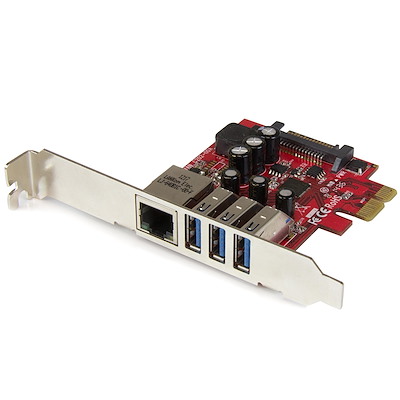
- #Asus usb 3.0 pci express card how to
- #Asus usb 3.0 pci express card install
- #Asus usb 3.0 pci express card driver
- #Asus usb 3.0 pci express card plus
Note: You may need to disconnect and re-connect your USB device after applying these settings to re-establish the connection.
#Asus usb 3.0 pci express card plus
Click the plus sign (+) next to “USB settings” and “USB selective suspend setting” to expand the options and change the setting to Disabled.Click Change plan settings for the plan you want to change.Click Hardware and Sound, then click Power Options.On your keyboard, press the Windows key + X and select Control Panel.
#Asus usb 3.0 pci express card how to
The steps below outline how to configure the USB root hub to stay on during hibernation, to prevent this from happening. If the USB device does not work after your computer has been in extended hibernation, it is likely that Windows has automatically turned off the USB Root hub to save power.
#Asus usb 3.0 pci express card driver
Your computer will automatically complete the driver installation and your device should be ready to use. #Asus usb 3.0 pci express card install
Follow the on-screen prompts to install the device drivers and restart the computer when prompted. Extract the files using the instructions in Step 2. Note: If the Run as Administrator option is not available, you might be attempting to run the installer from within the zipped file. In the list of extracted files, right-click the Setup.exe file and select Run as Administrator. Once the download is complete, right-click the zip folder that you downloaded, select Extract All, and follow the on-screen instructions. Note: Windows will typically save the files to the Downloads folder that is associated with your user account (for example, C:\Users\ your_name\Downloads). You can find the part number and product ID on the product’s packaging. Download the latest drivers from the website ( ). Prior to installing this device, ensure that your operating system is up to date (for example, you have installed the most recent service pack). Windows Server® 2008 R2, 2012, 2012 R2, 2016, 2019ĭevices that do not comply with the USB Battery Charging Specification may only receive standard USB power. Test results were obtained using an Intel® Ivy Bridge system, add-on USB 3.0 cards, a UASP-enabled enclosure, and a SATA III solid state drive. In testing UASP performed with up to a 70% faster read / 40% faster write speed over traditional USB 3.0 at peak performance.Īt the same peak in testing, UASP also showed up to an 80% reduction in required processor resources. UASP is supported in Windows® 8, 8.1, Server 2012 and Linux kernel 2.6.37 or later. For added versatility, the controller card is equipped with a standard profile bracket and includes a low-profile/half-height bracket for installation in small form-factor computers.īacked by a 2-year warranty and free lifetime technical support. The PCIe USB 3.0 adapter is compliant with USB 3.0 standards for data transfer speeds up to 5 Gbps, while still offering backward compatibility with existing USB 2.0 / 1.1 devices. 
See our UASP test results below for further details.

Using a more efficient protocol than the traditional USB BOT (Bulk-Only Transport), UASP technology optimizes transfers by allowing multiple commands to be processed simultaneously, significantly increasing transfer speeds for less wait time on data transfers. The PEXUSB3S25 2-Port PCI Express USB 3.0 Card lets you add two USB 3.0 ports to your PCI Express-enabled computer system, with an optional LP4 power connector to connect to your system power supply and deliver up to 900mA of power per port to USB 3.0 bus-powered devices (500mA for USB 2.0).Įnhanced with UASP support (USB Attached SCSI Protocol), this USB 3.0 controller performs up to 70% faster than conventional USB 3.0 when paired with a External Drive Enclosures (Note: UASP is not supported by all operating systems).






 0 kommentar(er)
0 kommentar(er)
